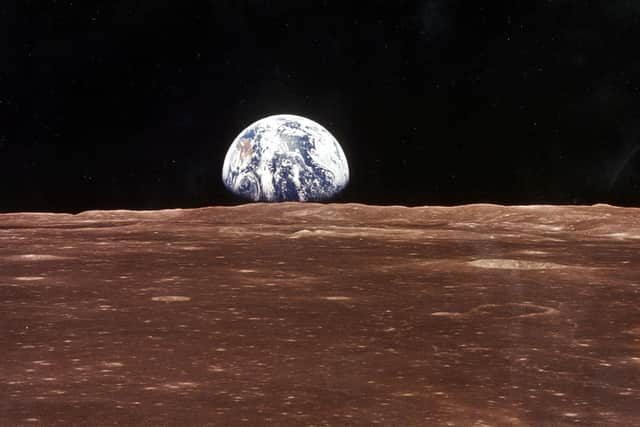How 19th-century science could help measure Earth's effect on spacetime as predicted by Albert Einstein – Professor Matthew Cartmell
The rotation of a massive object such as a planet produces a dragging effect on spacetime in its wake. Imagine a chess board in the form of a thin flexible membrane, then put a billiard ball in the middle and see how the square pattern distorts around the ball. This is how our spinning Earth distorts the spacetime around it.
‘Frame-dragging’ is the pulling of that spacetime, but only two credible attempts at measuring it close to Earth’s surface have ever been made, both at low-Earth orbits and colossal cost. Although experimental measurements exist, they’ve been largely based on the detection of tiny changes in the direction of spin of four gyroscopes on board the Gravity Probe B satellite in 2008.
Advertisement
Hide AdAdvertisement
Hide AdAccurate frame-dragging measurement much closer to Earth’s surface remains unresolved, mainly because the mechanical signals are so minute and interference from environmental and measurement noise is so enormous. There have been measuring proposals based on the detection of Earth’s motion using underground ring-laser gyroscopes, while others have suggested the relatively simple Foucault pendulum, first appearing as a 67-metre installation in Paris in 1851, as a frame-dragging measuring instrument.
At its simplest, a Foucault pendulum is a long, heavy weight suspended from the ceiling above a circular scale, originally to monitor the Earth’s rotation. At the University of Strathclyde, we’ve been working on an all-new Foucault pendulum, run continually using laser instrumentation to detect the tiny frame-dragging effect, for which we’ve received funding from the Royal Society of Edinburgh.
The best places for making such measurements would be the poles, partly because signals there are maximised, helped by the naturally low levels of environmental noise. The natural frame-dragging signals available in Scotland are around three-quarters of those available at the North Pole.
Managing to detect a strong enough frame-dragging signal from Strathclyde is a major challenge. As well as experimental errors naturally expected in any laboratory setting, there are high levels of fluctuating interference in the signal we receive due to the natural make-up of the Earth itself. Then there’s the problem of accurately relating the motion of the pendulum to the truly fixed reference point of the fixed stars, and how frame-dragging makes this reference deviate slightly over time.
If we can detect this tiny deviation in the pendulum’s motion based on those stars, then we have a solid basis for detecting the frame-dragging effect Einstein and his colleagues predicted. Our experiment uses a four-metre Foucault pendulum, driven by a direct electromagnetic drive, in a specially insulated laboratory space.


Laser sensing instrumentation reads the pendulum’s motion relative to the lab’s position, and software subtracts that from the various forms of interference using special statistical data processing techniques. The gradual slip of the pendulum from alignment with those fixed stars can then be calculated, giving a measurement of the frame-dragging effect.
It will take 18 months before we hope to have logged enough data to extract that final measurement. We have a lot of space and time to cover.
Matthew Cartmell is a professor of nonlinear dynamics at the University of Strathclyde. The RSE, Scotland's national academy, is on Twitter at @RoyalSocEd
Comments
Want to join the conversation? Please or to comment on this article.